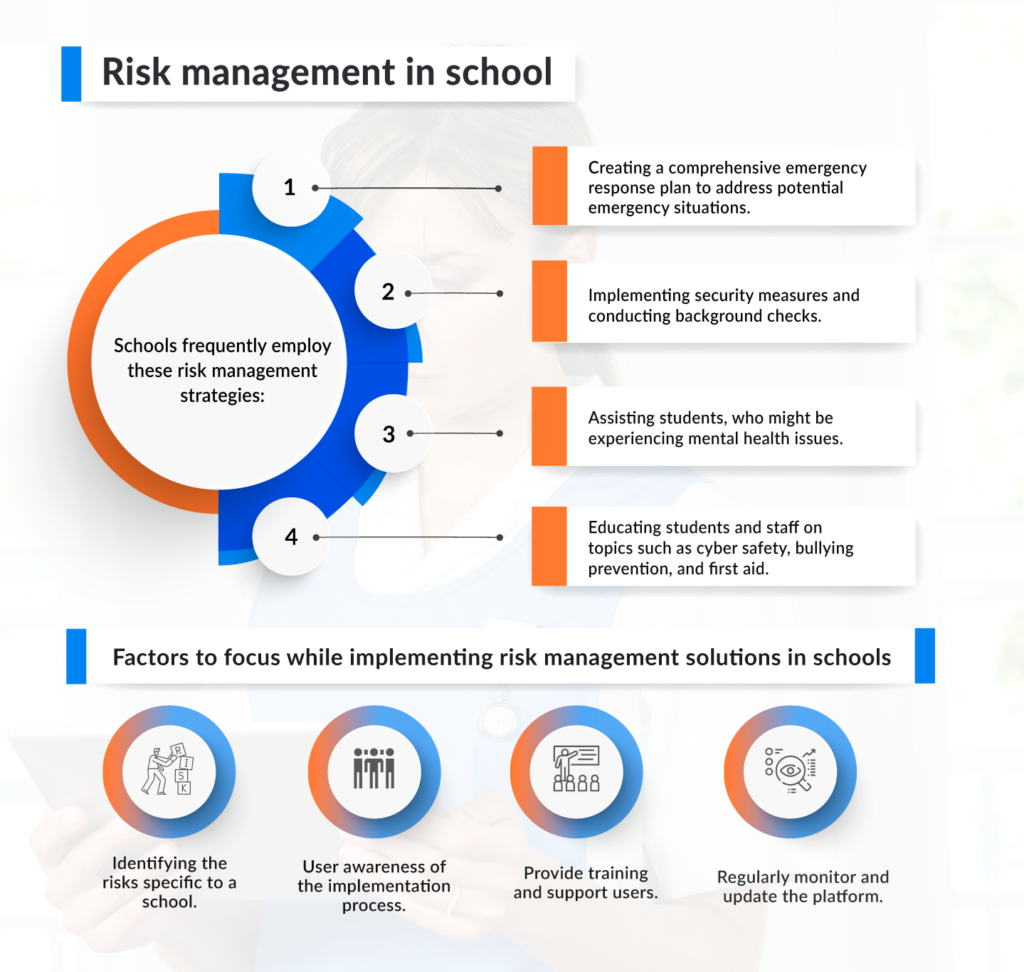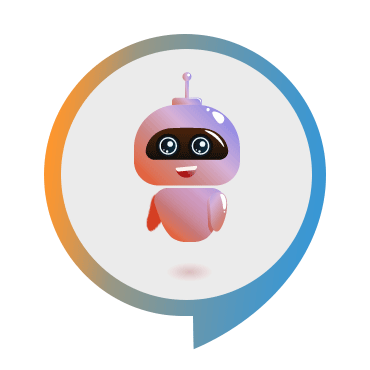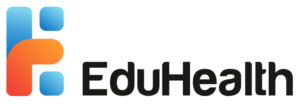How can EHRs contribute to risk management in Schools?
Risk management is one of the most crucial aspects of ensuring the safety and well-being of students, staff, and visitors in schools. Right from natural disasters to accidents to emergencies, there are various risk factors that schools must be prepared for and act upon. One tool that can help in risk management in schools is the Electronic Health Records (EHRs). It not only helps schools to manage student health records more efficiently but also enable schools to identify potential risks like – allergies or chronic medical conditions, and create proactive measures to prevent or respond such emergencies.
Let’s take a look at the risk management in schools and why risk management is important in schools?
Identifying potential risks, evaluating their likelihood and potential effects, and putting mitigation or prevention measures in place are all parts of risk management in schools. This covers both physical and non-physical hazards, such as those posed by medical conditions, accidents or injuries, cyberbullying, or mental health issues.
Some common risk management strategies that schools follow are:
- Creating a comprehensive emergency response plan to address potential emergency situations, such as natural disasters or intruders, and conducting regular drills and training to ensure staff and students are prepared.
- Implementing security measures and conducting background checks to ensure that the staff or volunteers do not have any criminal activity or background.
- Schools have counselors or other mental health professionals to support students who may be struggling with mental health concerns.
- Educating students and staff on topics such as cyber safety, bullying prevention, and first aid.
Schools should regularly assess various risk factors and evaluate the effectiveness of their risk management strategies to ensure they are providing a safe and secure environment for their students and staff.
School nurses play a critical role in managing health-related emergencies in schools. They are responsible for providing medical care and support to students and staff members who may require immediate medical attention.
In a medical emergency, school nurses are often the first responders, and their actions can greatly impact the outcome of the situation.

Keep risks at bay with the right tools
Here are the key benefits of implementing a risk management solution and how it can help school nurses to perform their duties better during emergencies.
- Better preparedness for medical emergencies: Risk management software can help a school district prepare for medical emergencies by identifying potential hazards and establishing emergency response protocols. This can help ensure that staff members are equipped with the necessary knowledge and resources to respond to a medical emergency in a timely and effective manner. It helps to provide a streamlined process to report incidents such as falls, injuries, and illnesses.
- Incident tracking and reporting: Risk management software can help school nurses track and report incidents related to medical emergencies. Risk management software can help school nurses manage students’ allergies by providing a centralized platform to track allergies, associated triggers, and emergency response plans. For example, if a student experiences a severe allergic reaction, the nurse can record the incident in the software and add the information about the symptoms, treatment provided, and note if any follow-up care is required. This information can then be used to identify trends and patterns in incident reports and improve safety measures.
- Access to student medical records: Risk management software can provide school nurses with easy access to student medical records, which can help them make informed decisions during an emergency. For example, if a student has a pre-existing medical condition, the nurse can quickly access their medical record to review the student’s history and determine the appropriate course of action.
- Health Screening: Risk management software can help school nurses manage student health screenings by providing a centralized platform to track and monitor health screening schedules, results, and follow-up procedures. The software can also generate reports to help nurses identify health trends and plan health education programs for each student.
- Efficient communication: Risk management software can help school districts communicate more efficiently during a medical emergency. For example, the software may include a communication feature that allows staff members to quickly and easily alert others of an emergency, which can help speed up response times and improve the overall outcome of the situation.
- Compliance with regulations: Risk management software can help school districts ensure compliance with regulations related to health and safety. This can help protect the school district from legal liability and ensure that students and staff members are safe and healthy while on campus.
- Enhanced collaboration and decision-making: Risk management software can help school districts collaborate more effectively during a medical emergency by providing a centralized platform for communication and decision-making. This can help ensure that all stakeholders are involved in the response efforts and that decisions are made quickly and efficiently.
- Automated medication management: Risk management software can help school nurses manage student medication more efficiently. It helps school nurses to manage all the medication information from a centralized platform to track medication schedules, doses, and administration times. The system can also alert nurses and staff members of medication schedules and monitor medication inventory. For example, if a student requires medication at specific times during the day, the software can send automated notifications to the nurse to remind them to administer the medication. This can help ensure that students receive timely and appropriate medical care.
Overall, an EHR system help school nurses to perform their duties more efficiently and effectively by providing incident tracking and reporting, automated medication management, access to student medical records, improved communication, and compliance with regulations. This can lead to a safer and healthier learning environment for students and staff members.
What are the factors that one need to focus while implementing risk management solutions in a school?
Identifying the risks specific to a school comes as the first step in implementing a risk management solution platform that focuses on the health and medical area. There are many different risk management solution platforms available, each with its own features and capabilities. Some key features to look for include health monitoring tools, incident reporting and tracking, and compliance management. It’s important to involve the stakeholders like – the school nurses, administrators, teachers, staff, and parents in the implementation process to ensure that everyone understands the purpose and benefits of the platform. Once the platform is implemented, it’s important to provide training and support to ensure that users can use the platform effectively. This includes providing user manuals, training sessions, and ongoing technical support to address any issues that may arise. Health and medical risks are dynamic and can change rapidly. It’s important to regularly monitor and update the platform to ensure that it remains effective in managing risks.
To know more about the EduHealth platform connect with our experts.








